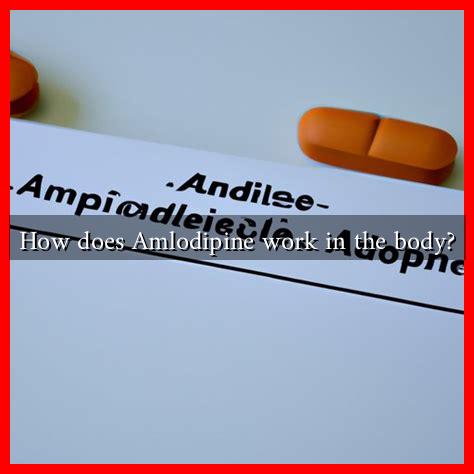-
Table of Contents
How Does Amlodipine Work in the Body?
Amlodipine is a widely prescribed medication primarily used to treat high blood pressure (hypertension) and certain types of angina (chest pain). As a member of the calcium channel blocker class of drugs, it plays a crucial role in cardiovascular health. This article delves into the mechanisms of action of amlodipine, its effects on the body, and its clinical significance.
Understanding Calcium Channel Blockers
To appreciate how amlodipine works, it is essential to understand the role of calcium channels in the cardiovascular system. Calcium channels are proteins located in the cell membranes of heart and vascular smooth muscle cells. They allow calcium ions to enter the cells, which is vital for muscle contraction.
Calcium channel blockers, like amlodipine, inhibit this process, leading to relaxation of the vascular smooth muscle and a decrease in heart rate. This results in lower blood pressure and reduced workload on the heart.
Mechanism of Action of Amlodipine
Amlodipine specifically targets L-type calcium channels, which are predominantly found in the heart and blood vessels. Here’s how it works:
- Vasodilation: By blocking calcium entry into vascular smooth muscle cells, amlodipine causes these muscles to relax, leading to the dilation of blood vessels. This vasodilation reduces peripheral resistance, which lowers blood pressure.
- Reduced Cardiac Workload: Amlodipine decreases the force of contraction of the heart muscle, which reduces the overall workload on the heart. This is particularly beneficial for patients with angina, as it alleviates chest pain by improving blood flow to the heart.
- Long Duration of Action: Amlodipine has a long half-life, allowing for once-daily dosing. This sustained effect helps maintain stable blood pressure levels throughout the day.
Clinical Applications of Amlodipine
Amlodipine is primarily used for:
- Hypertension: It is effective in lowering blood pressure, which can help prevent complications such as stroke, heart attack, and kidney damage.
- Angina Pectoris: Amlodipine is used to manage chronic stable angina and vasospastic angina, improving exercise tolerance and reducing the frequency of angina attacks.
- Heart Failure: In some cases, amlodipine may be used as part of a comprehensive treatment plan for heart failure, particularly in patients with preserved ejection fraction.
Side Effects and Considerations
While amlodipine is generally well-tolerated, it can cause side effects in some individuals. Common side effects include:
- Swelling of the ankles or feet (peripheral edema)
- Flushing
- Dizziness or lightheadedness
- Fatigue
Patients should consult their healthcare provider if they experience severe side effects or have concerns about their medication. It is also important to note that amlodipine may interact with other medications, so a thorough review of a patient’s medication history is essential.
Conclusion
Amlodipine is a powerful tool in managing hypertension and angina, working primarily through the inhibition of calcium channels to promote vasodilation and reduce cardiac workload. Its long duration of action and effectiveness make it a popular choice among healthcare providers. However, like all medications, it is essential for patients to be aware of potential side effects and interactions. By understanding how amlodipine works in the body, patients can engage more effectively in their treatment plans and contribute to better health outcomes.
For more information on hypertension management and treatment options, you can visit the American Heart Association.

